How to Pressure Cook at High Altitude | Instant Pot Guide
Did you know that foods cook differently at high elevations than at sea level? In this detailed guide, we talk about the recipe changes you’ll need to make when you’re cooking at altitude, so you can trust that your favorite Instant Pot meals will turn out delicious!
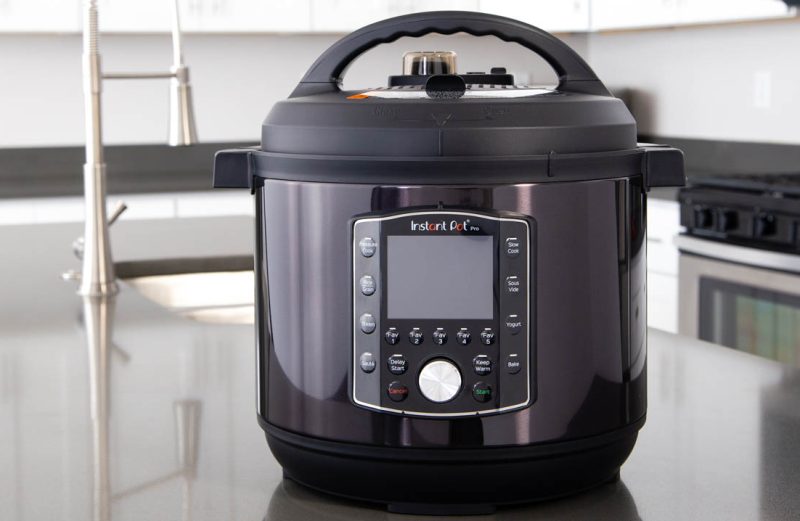
If you’ve ever had trouble making your favorite recipe when you’re visiting friends or family, elevation might have something to do with it.
Our Experience Cooking at High Elevations
Barbara and Jenn live (and develop our recipes) between 4,000 and 5,000 feet above sea level, surrounded by mountains in the Salt Lake Valley.
Throughout the year, we visit family and friends who live at higher elevations, and we bring our Instant Pot along when we’re camping in our nearby mountains, which range from 7,000 to 11,000 feet in elevation.
Adjusting for altitude becomes increasingly important the higher up you cook. So we’ve enlisted the help of our friend Laurie, who’s an expert at Instant Pot cooking from her home in the Colorado Rockies at 9,000 feet.
At these higher altitudes, we need to make adjustments to our recipes, especially those with longer cook times (foods like dry beans, whole grains, and tough cuts of meat like chuck roast),
Together, we’ve compiled the most comprehensive guide to using a pressure cooker at high elevations. We’d love to hear how it helps!
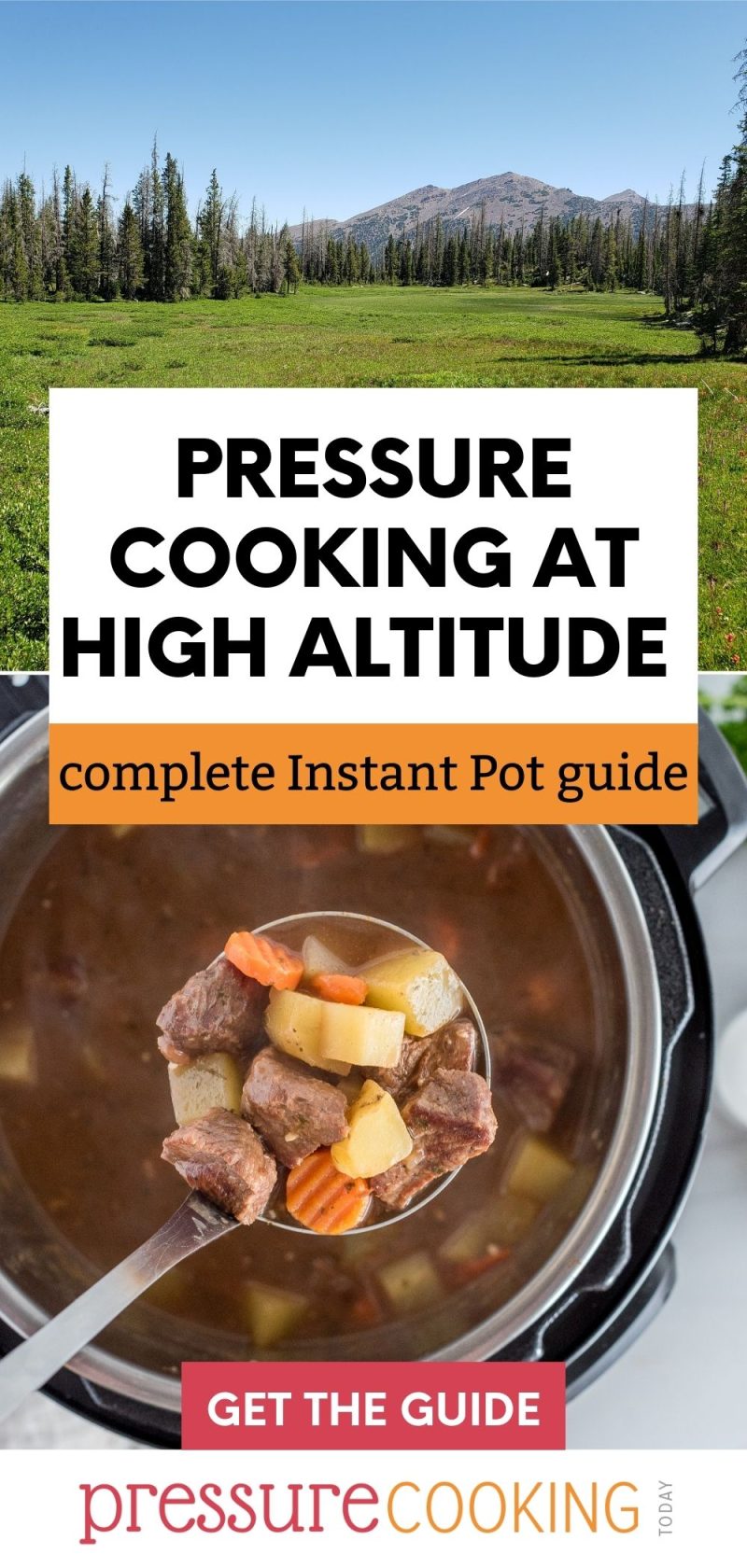
How do I know if I’m cooking at high altitude?
Most cookbooks consider “high altitude” to start around 3,000 feet, since that’s when the elevations starts to play a more significant role in cooking.
If you’re not sure, you can look up the elevation of your home or your destination.
The higher in altitude you go, the more it affects your cooking.
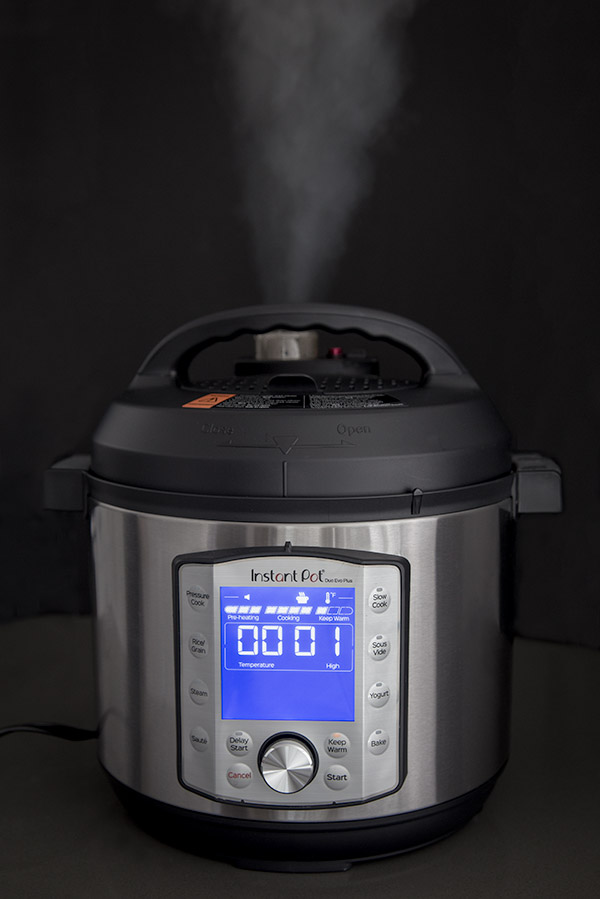
The Science of Cooking at High Elevation
Do you ever think about the science of pressure cooking when you pull out your Instant Pot?
If you’re like me, you’re probably more focused on getting food on the table before people start getting hangry.
However, it turns out that higher altitude affects pressure cooking in a lot of ways!
Why does the boiling point matter?
“The technical definition [of boiling] is what occurs when the vapor pressure of a liquid is greater than or equal to the atmospheric pressure. …
[At the boiling point] the outward pressure of the water vapor trying to escape will exceed that of the air pressing it down. The floodgates open, and water molecules rapidly jump from liquid state to gas.”
Everything You Ever Wanted to Know About Boiling Water
In other words, the atmospheric pressure at sea level is 14.7 pounds per square inch (psi), and water needs to reach 212°F to reach a full rolling boil.
This temperature is the highest cooking temperature you can reach in an open pot.
Less Atmospheric Pressure at Altitude
The general rule is that psi drops by half a pound for every 1,000 feet above sea level. In other words, as you gain altitude, you cook at a lower atmospheric pressure AND at a lower temperature.
So at 5,000 feet, atmospheric pressure is lower at 12.3 psi, and water reaches a full rolling boil at 203°F. At 10,000 feet, atmospheric pressure drops to just 10.2 psi, and water boils at 193°F.
Therefore, food cooks about 10°F lower at 5,000 feet and nearly 20°F lower at 10,000 feet. This difference in temperature can make a huge difference in your finished meal!
Pressure Cooking Increases the Boiling Point
Your pressure cooker works by sealing the steam inside of the cooking pot. The build-up of steam increases the downward pressure on the liquid inside, which in turn makes the liquid reach a higher temperature than is possible on an open stovetop.
In other words, pressure cooking increases the boiling point of water, so food cooks hotter and faster! However, a pressure cooker at sea level will work differently from a pressure cooker at higher elevations.
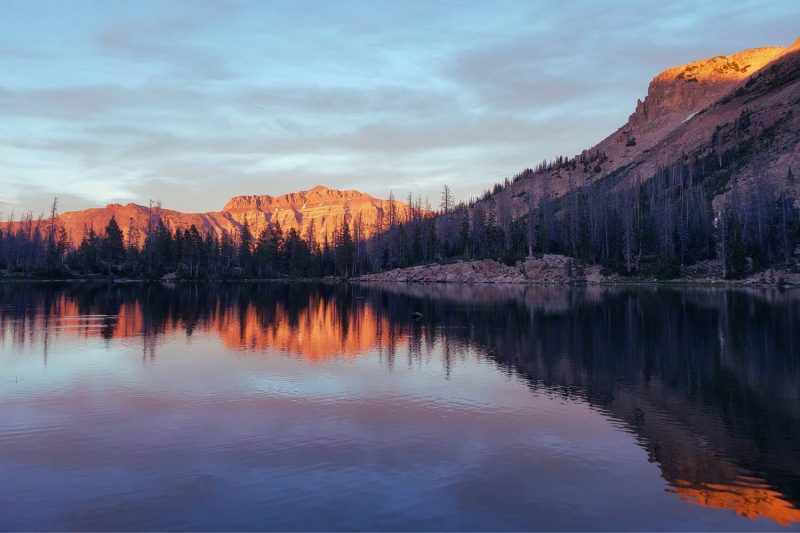
How to Adjust an Instant Pot Recipe for High Altitude Cooking?
When cooking at higher altitudes, you will need to do one or more of the following:
- Increase the recipe cooking time
- Add more liquid
- Reduce the heat
- Use the pot-in-pot cooking method
- Track changes to use in the future
Increase the Recipe Cook Time at High Altitude
The technical rule is to add 5% more cooking time at 3,000 feet above sea level, 10% more at 4,000 feet above sea level, and so on, increasing cooking time by 5% every 1,000 feet in elevation.
The following table shows the boiling point and cook time increase for each altitude, along with a sample adjusted cook time for our Green Chili Verde recipe.
| Elevation Above Sea Level | Boiling Point | Increase Cook Time by (Multiply by) | Adjusted Chili Verde Cook Time |
| Below 3,000 feet | 212°F to 208°F | – | 55 minutes |
| 3,000 feet | 207°F | 5% (1.05) | 58 minutes |
| 4,000 feet* | 205°F | 10% (1.1) | 60 minutes |
| 5,000 feet | 203°F | 15% (1.15) | 62 minutes |
| 6,000 feet | 201°F | 20% (1.2) | 65 minutes |
| 7,000 feet | 199°F | 25% (1.25) | 68 minutes |
| 8,000 feet | 197°F | 30% (1.3) | 70 minutes |
| 9,000 feet | 195°F | 35% (1.35) | 72 minutes |
| 10,000 feet | 193°F | 40% (1.4) | 75 minutes |
**Differences in the exact boiling point by altitude are generally a rounding difference. See the USDA for more information.
This altitude table is a starting point for adjusting recipes. However, it’s like the pirate code: more like guidelines than actual rules.
What matters most is what works in your kitchen!
Add More Liquid at High Elevations
Liquids evaporate more quickly at higher elevations. When using the Pressure Cook setting, you usually won’t have to add more liquids than called for in the recipe. (The tight seal required to build pressure also helps to minimize moisture loss.)
However, when using the Sauté or Slow Cook settings, moisture loss is definitely a concern!
When sauteeing, foods may scorch more easily at higher elevations unless you add more oils or liquids.
When using the Slow Cook setting, the Instant Pot Slow Cook setting on High is too high for most recipes. Generally, slow cooking means a gentle simmer, not a full boil
Note from Laurie: Similarly, when I Slow Cook, the “High” setting keeps things at a pretty wild boil here at my elevation. Instead, I use the “High” setting long enough to heat things up, but then adjust it to “Medium” or “Low” to continue slow cooking.
Reduce the Heat when Cooking at High Altitude
Like the last one, this tip applies when cooking with the lid off.
Note from Laurie: On my Instant Pot, the temperature for the Sauté setting on Low is 275–302°F. However, since water boils at 196°F feet where I live, even “Low,” may result in foods getting too hot, boiling too rapidly, or even burning without adding extra oil or liquids.
At my altitude, if I want a gentle simmer, I’ve found that the Slow Cook “High” setting is the right choice, since it cooks between 200–210°F.
Cook Pot-in-Pot
When cooking things under pressure where the water ratio is important or if they tend to scorch easily, use the Pot-In-Pot method!
Even a small increase, such as tomato sauces, pastas, or grains,
When I cook my Pumpkin Pie Steel Cut Oats at altitude, I will use my 3-quart cooking pot from the Instant Pot Mini, which fits perfectly on a trivet inside a 6-quart Instant Pot. I use 2 cups of water underneath and everything cooks through without worrying about the Burn Notice.
Track Your Recipe Changes when Cooking at at High Altitude
This time adjustment equation works well for most recipes, but be prepared for some trial and error. You may need to add more or less time to those calculations or sometimes make no adjustments at all.
For example, Barbara originally developed our Instant Pot White Rice recipe, with a 3 minute cook time, at a location closer to 4,000 feet. When we moved closer to 5,000 feet, we’ve found we need a 4 minute cook time for the rice to turn out tender.
Adjusting Air Fryer and Oven Recipes for High Altitude
Air fryer and oven temperatures are NOT affected by altitude. There is no need to change the temperature or the cook time from what is specified in the recipe, regardless of altitude.
However, you may need to still adjust the recipe ingredients for altitude if you’re baking.
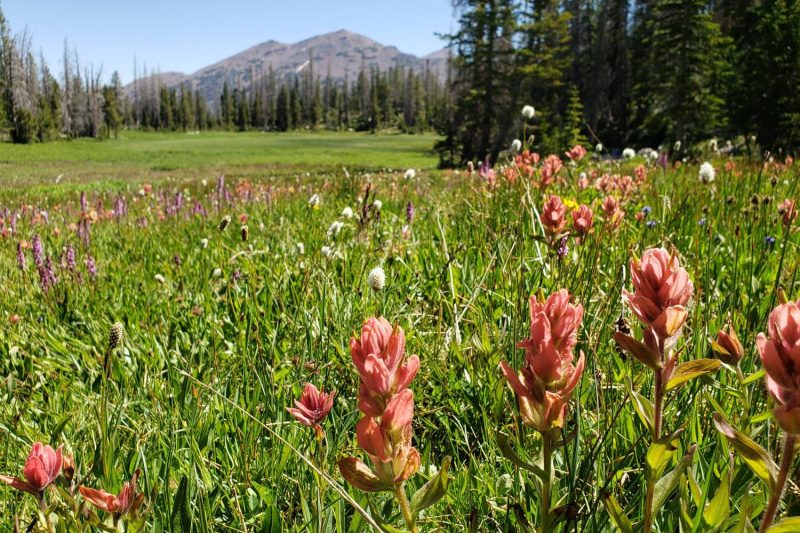
More Resources on Cooking at High Elevation
This guide has focused mostly on pressure cooking; however, high altitude affects every aspect of cooking. Here are some of my favorite resources:
- Barbara Bakes: Barbara’s baking recipes are all developed around 5,000 feet.
- Mountain Mama Cooks: Kelley cooks around 7,000 feet, and she’s an excellent resource for high-altitude baking, canning, and cooking.
- King Arthur Flour: Quick guide for ways to adapt baking recipes for altitude.
About Laurie
LAURIE BRATTEN has been living above 5,000′ elevation for 35+ years and currently lives at 9,000′ in the Colorado Rockies. She is a hobbyist cook & baker and has been experimenting with pressure cooking in the Rockies for three years. She is an avid organic gardener and grows natural foods year-round in her outdoor garden & heated greenhouse. Laurie and her husband are licensed ham radio operators, off-grid and ready for emergency communications. Laurie writes at highcountryliving.net.
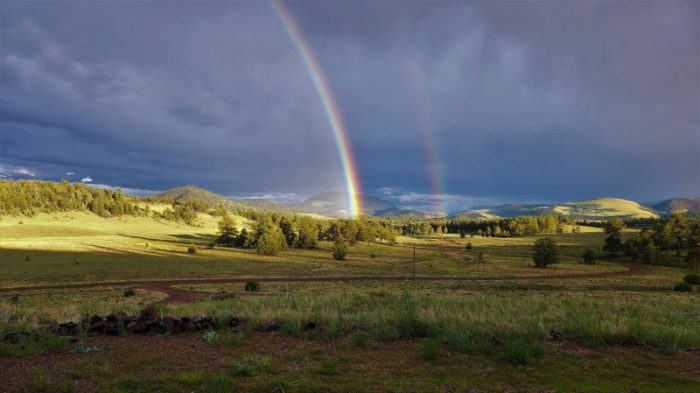
Any other questions about cooking at altitude?
Leave us a comment below and we’ll get back to you!
FOR MORE FROM PRESSURE COOKING TODAY
🥘 Browse our collection of the best pressure cooker / Instant Pot recipes.
💬 Follow Pressure Cooking Today on Facebook and Instagram for the latest updates.
👥 Join our Electric Pressure Cooker Facebook Group. Our positive community of pressure cooking fans use all brands of electric pressure cookers, so it’s a great resource if you have questions about your particular brand.
🥧 If you’re interested in more than just Instant Pot recipes, follow us at Barbara Bakes. There we post amazing breakfasts, breads, and the best dessert recipes!

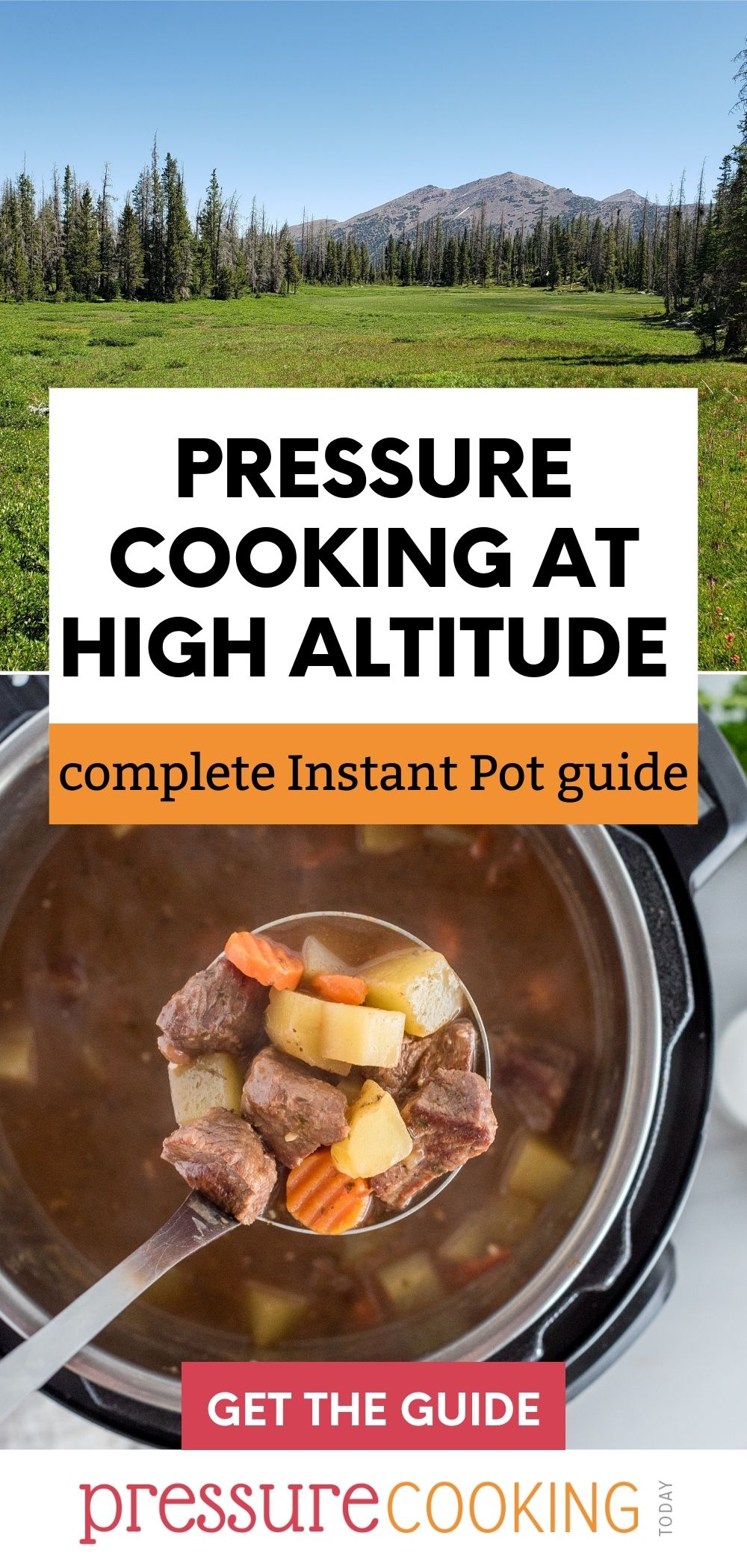
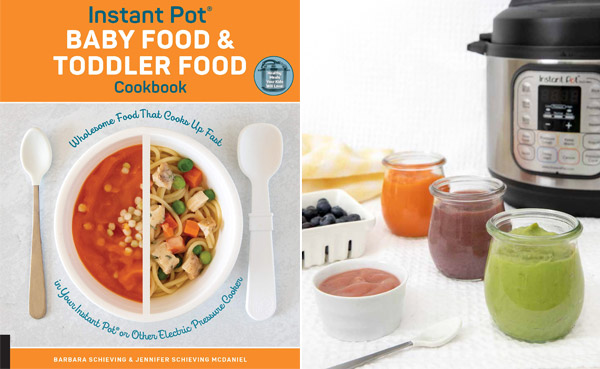

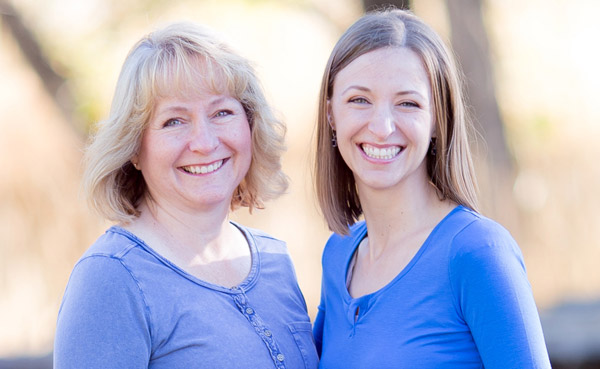
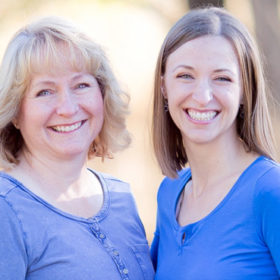
Great article! I am at 5000+’ cooking on a regular basis with my IP. I always add more time as suggested. I found the section on saute temps interesting. I’ve noticed that the crock pot really bubbles too. I just never connected it to a lower boiling temp. I did want to mention that altho you say no temperature adjustment is necessary in a conventional oven, some suggest it. But like you said, it’s not necessary. If you’re having problems with your cookies use a good sheet pan.
Thanks for sharing Jackie!